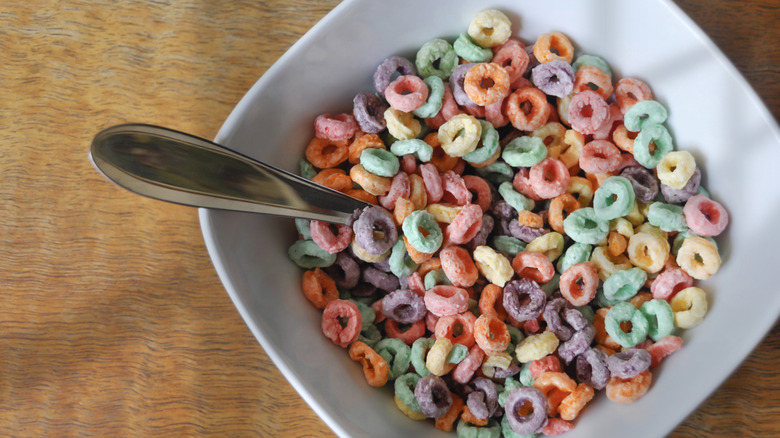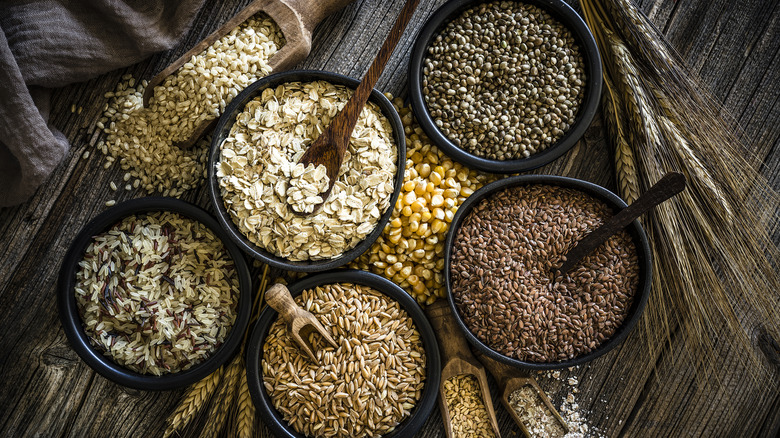What Is Gluten-Free Cereal Typically Made Out Of?
Those following gluten-free diets don't have to cut corners when it comes to filling breakfast bowls with tasty cereal. Whether scooping into servings of your childhood favorite Honey Nut Cheerios or digging into a box of Lucky Charms for an afternoon snack, the list of gluten-free cereals is anything but sparse. While labels often indicate whether a cereal is gluten-free, there are other clues gluten-minded shoppers can look for.
Whether you're looking for options for quick breakfasts or have a cereal bar recipe in mind, feel free to reach for Chex, Fruity Pebbles, Cocoa Pebbles, Annie's Cinnabunnies, Van's Honey Crunch, and Barbara's Puffins Honey Rice cereals without hesitation. For a cereal to fall into the gluten-free category, the ingredient list can't include wheat, barley, rye, or malt extract. If you see any of these listed on the box, you may want to place it back on the shelf. Gluten-free cereals are made with gluten-free grains like corn and rice. Quinoa, millet, buckwheat, and amaranth are other gluten-free grains that can be used in boxes of gluten-free cereal.
Protecting grains for production
Though some gluten-free cereals can be pricey, you can also find plenty of affordable options without needing to shell out extra cash for gluten-free marked cereals. Keep in mind that if a cereal box isn't blatantly labeled gluten-free, however, there may be some potential for ingredients to have come in contact with grains that do contain gluten. When grains are prepared for packaging, harvested gluten-free grains could come in contact with grains that contain gluten or machinery that has been used with these kinds of grains. So while you may think that a box of cereal made primarily with sorghum or buckwheat is gluten-free, it might not be.
As you go about stocking your kitchen with cereal to make gluten-free snacks and recipes, look for cereals that have been made in designated gluten-free facilities. Brands like General Mills go through great lengths to ensure boxes remain gluten-free by conducting several checks throughout the manufacturing process and dedicating specific vehicles to transporting the gluten-free cereals to stores. With so many cereal options, gluten-free cereal lovers can dig in, worry-free.

